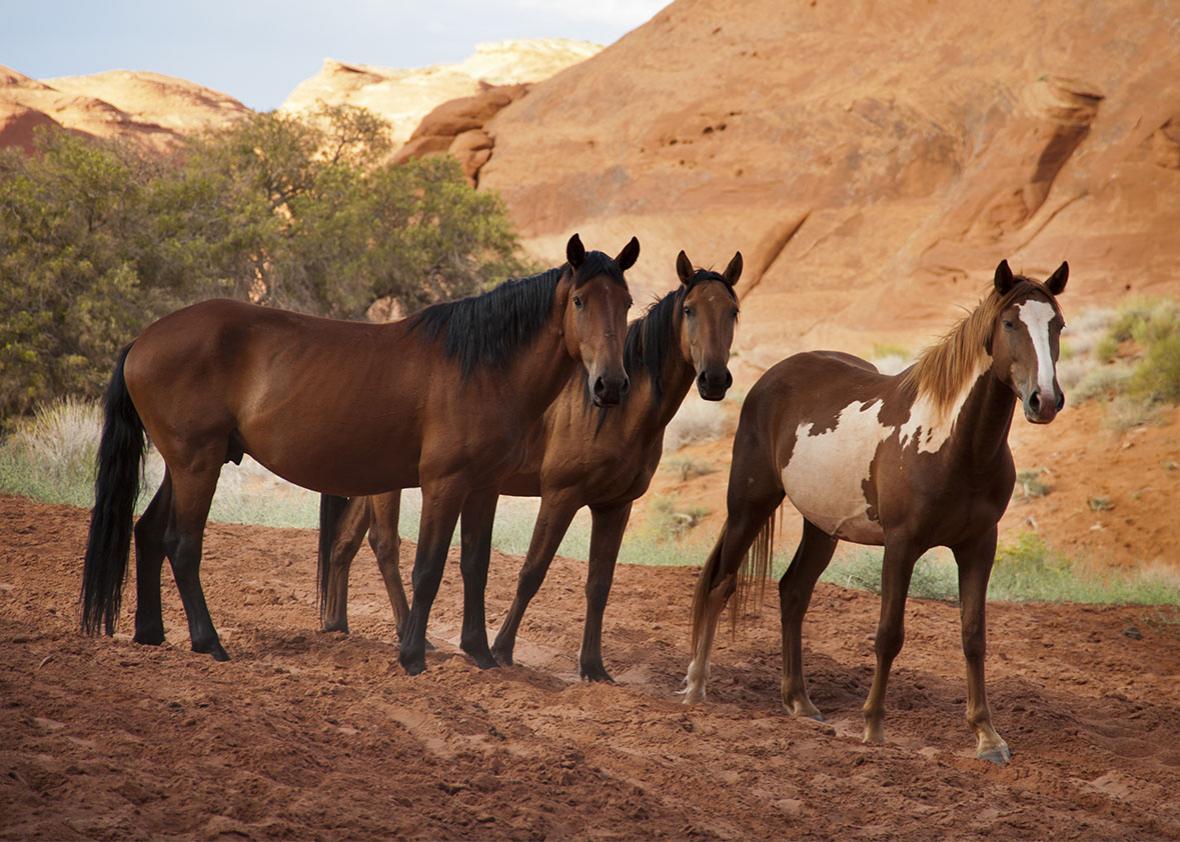Horses, particularly wild ones, seem to embody freedom and strength. Mustang and stallion are words that capture the human imagination as icons of the untamed. When the U.S. Forest Service proposed removing a herd from Arizona’s Salt River wildlife refuge, a Change.org protest helped stop it, invoking the natural beauty that horses offer visitors.
This romanticizing is a serious environmental challenge. Horses in North America are not symbolic of wilderness; they are human introductions no more native to this continent than Norway rats.
North America’s wild horses are the feral descendants of animals brought by Europeans in the past few hundred years. Biologically speaking, this is the blink of an eye, far too short a time for horses to be considered native. More importantly, that’s much too short for native North American plants and animals to adapt to the pressures of coexistence.
Grasslands are protected by “biotic crusts” that consist of loose soil held together by tiny cyanobacteria, lichens, mosses, and green algae. They serve as a fragile glue that keeps desert soils from being washed or blown away. But these crusts are pulverized by horses, leading to poor water absorption, reduced fertility, and long-lasting environmental damage. Grasslands are disappearing as wild horse hooves crush biotic crusts, encouraging erosion that leaves wide swaths permanently degraded, replaced with barren rock
Furthermore, wild horses compete with native grazers (as well as cattle) for limited forage and water. As wild horse populations surge past the 47,000 now thundering across 31.6 million acres of public land, they threaten the survival of native species, exacerbating the impacts of climate change and habitat fragmentation.
Because our culture values them, wild horses have benefited from protection and reprieves from culling that would have been employed for virtually any other destructive animal, native or introduced. Because the U.S. Forest Service’s proposal to capture some of the Salt River herd was met with public outcry, plans were scrapped—even though the herd is degrading a fragile and rare desert oasis. The protesters, unsatisfied visiting the 9.2 million domestic horses across the United States, insisted that retaining this wild herd at full strength in a wildlife refuge was ethically and aesthetically justified, simply based on their love of horses, despite the environmental costs.
In just the past four years, wild horse and burro management has cost U.S. taxpayers more than $291 million, including $49 million annually to care for 46,000 captured feral horses in off-range corals. This annual budget is almost 10 times bigger than budgets allotted to save many endangered species; managing wild horses is sapping agency resources, directly and indirectly driving native species to extinction.
The issue has become one of imagery, not integrity, and this is where science is losing out. If people value feral horses more than native birds, elk, pronghorn, or the fragile native plants that are overgrazed into oblivion by burgeoning horse herds, then no amount of evidence will change their minds. But maybe, if those who protest feral horse control understood the damage to native species, the deterioration in water quality, and the economic cost, they would not be so ardent.
The trope that horses are a wild native species is a misunderstanding. It’s based in part on the existence of horses in North America through the last Ice Age. But that prehistoric species of horse, and the ecosystems and climate conditions in which it occurred more than 10,000 years ago, has little in common with today’s feral herds. North America’s last native horses shared a Beringian steppe grassland with mammoths, steppe bison, and a diverse megafauna that is all sadly gone, likely due to overhunting courtesy of our species. While the loss of the North American megafauna at our hands was tragic, unleashing feral horses in the West only exacerbates our species’ negative impacts on the environment. The Arctic steppe pasture had nothing in common with the arid West. Pushing feral horses back onto the North America of today has no scientific merit.
The current stalemate portends an end result that will be tragic. With little controlling their populations, wild horses will increase in number and permanently degrade sensitive riparian areas, like the Salt River, across the West. These areas are unlikely to recover unless we round up invasive horses soon, because topsoil in arid ecosystems can take thousands of years to regenerate. At that point we will have even more horses to remove, at greater emotional and financial cost, causing even more suffering. If we refuse even this level of obligation, then starvation will take our place. In a degraded ecosystem devoid of its natural wonder and resources, hunger will cull the horses we lacked the courage to manage—in the cruelest way possible. This is a basic tenet of biology: Population increases are never infinite, and they rarely decline gracefully.
We are not making a prediction about some distant future: The herds are increasing at a fast clip, and the native biota has already suffered greatly. By shunning our responsibility to control feral horse herds like those found in the Salt River, we are delaying the inevitable, passing the difficult decisions down to the next generation, who will have to do the dirty work we refused, and without the chance to save the native species we abandoned. The Forest Service’s only mistake was waiting this long to attempt removal; anyone who truly values nature, the deserts, and their native species will support the relocation of feral horses from the Salt River Basin and everywhere else they are causing damage.
